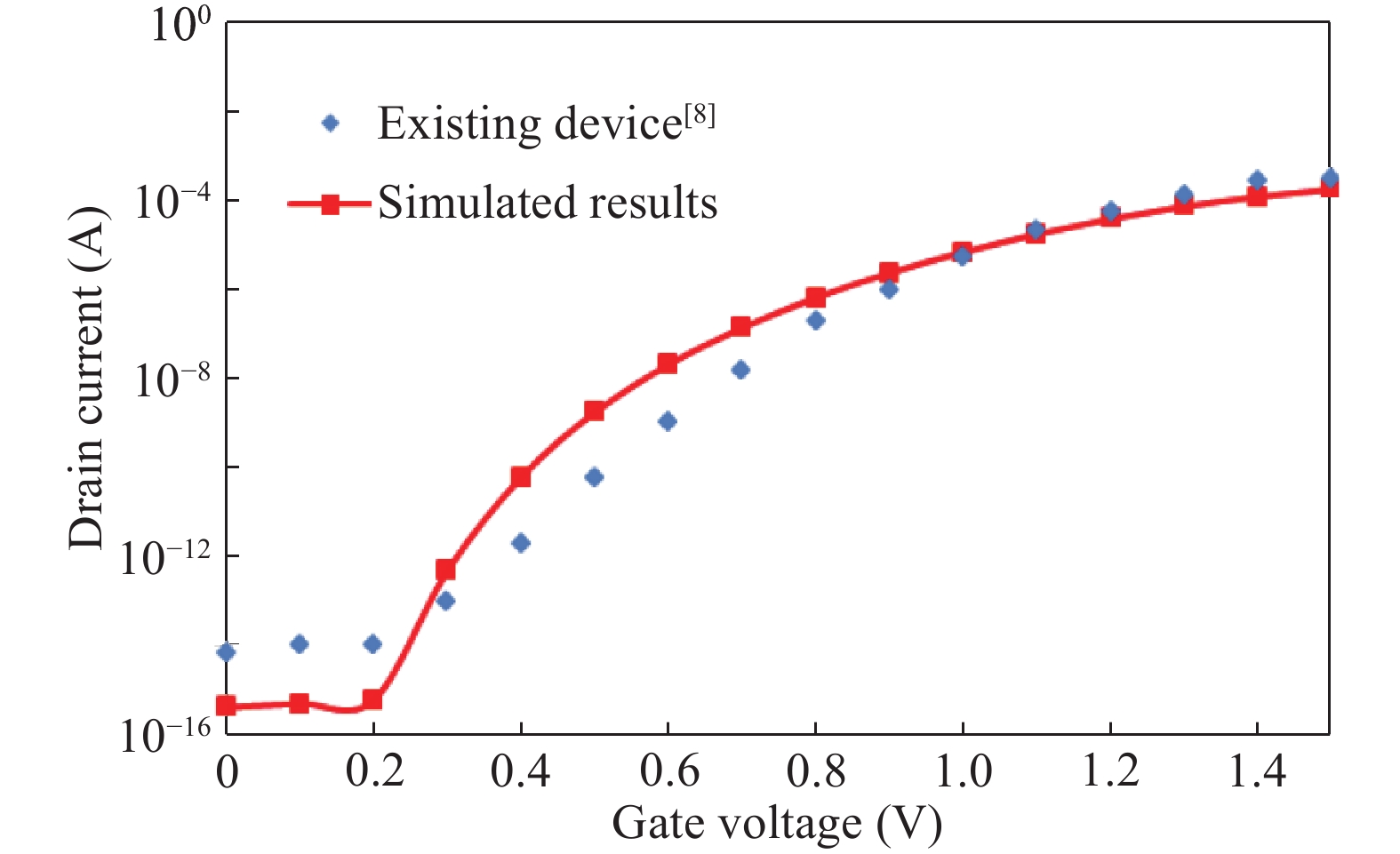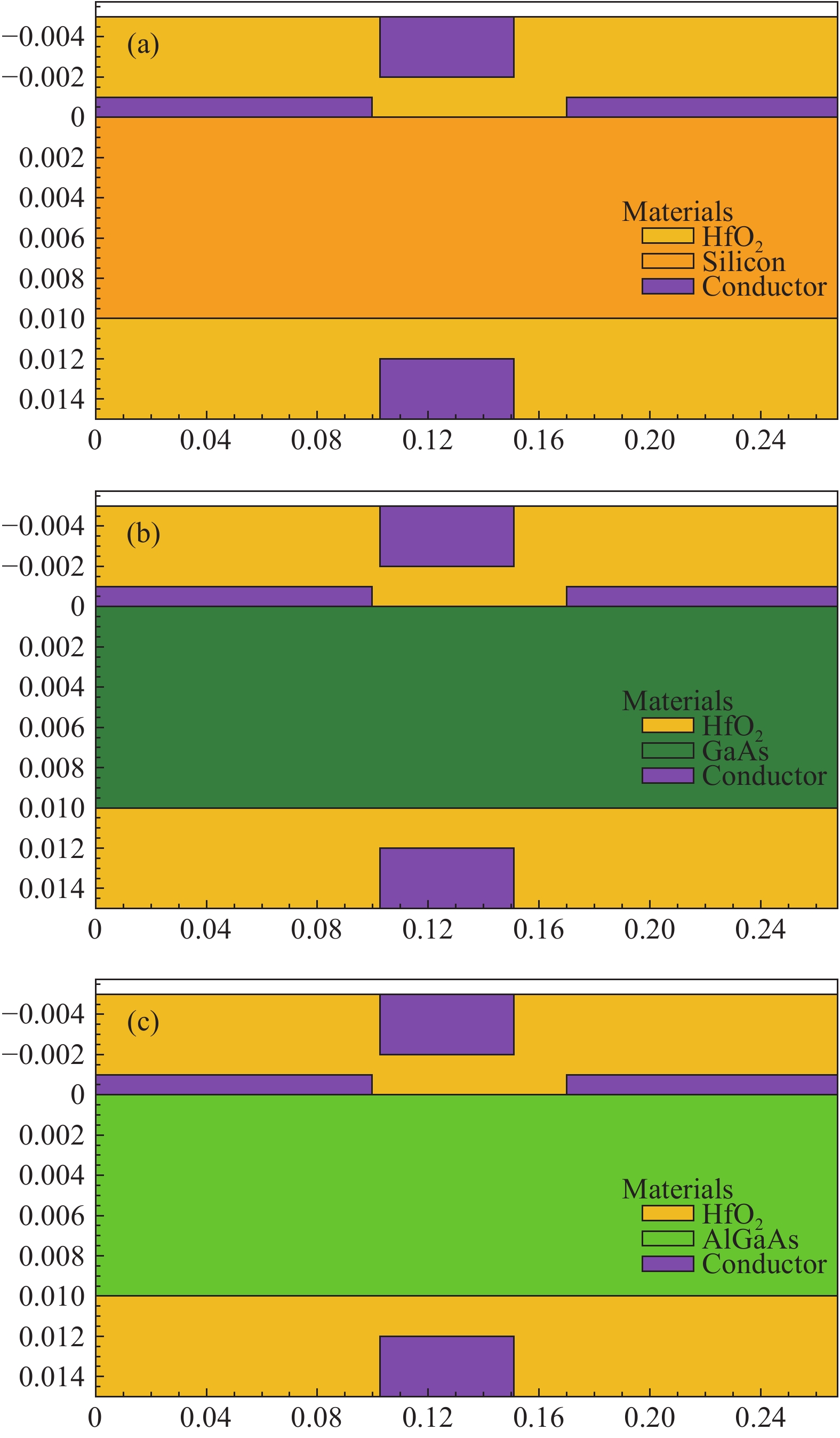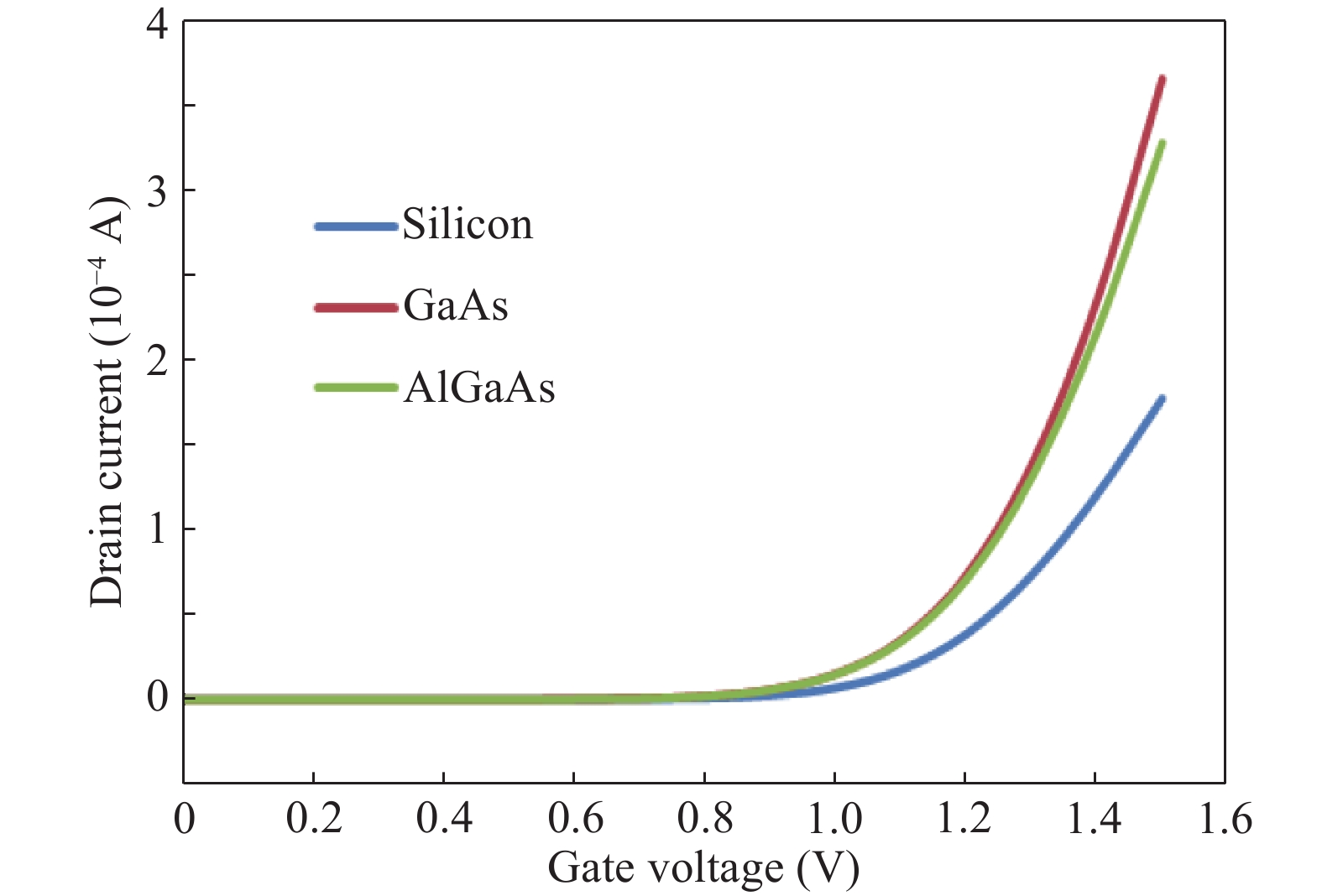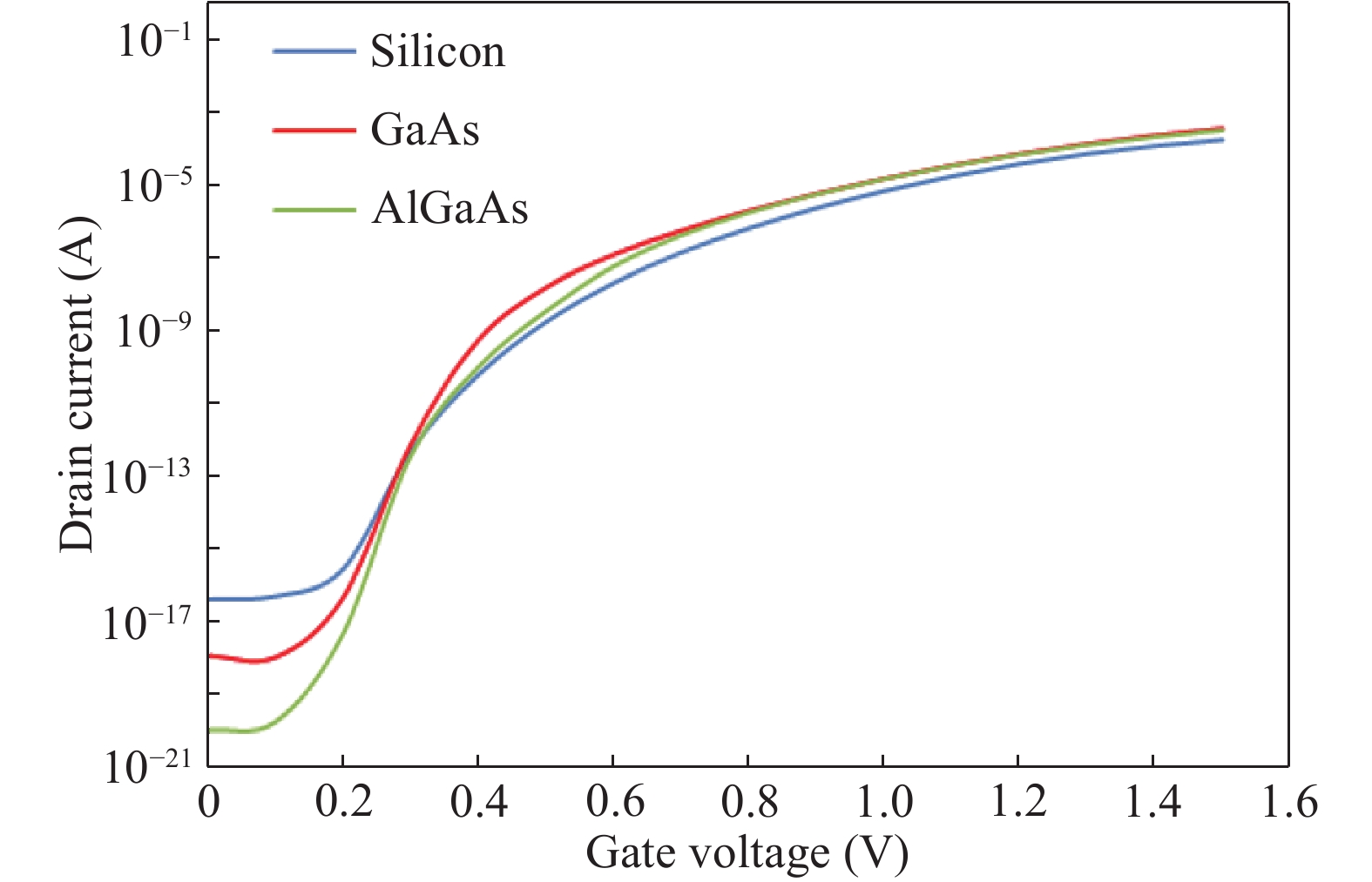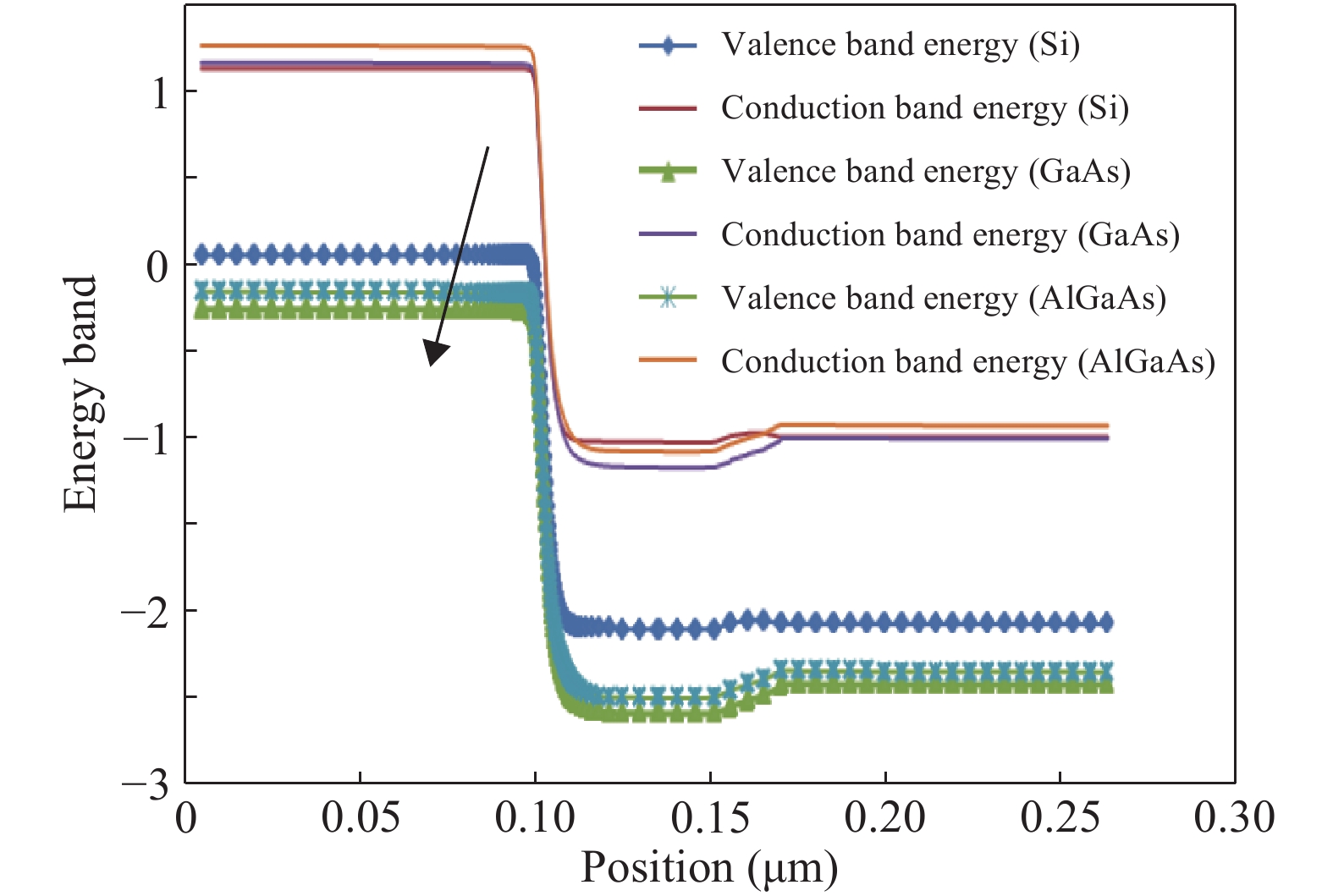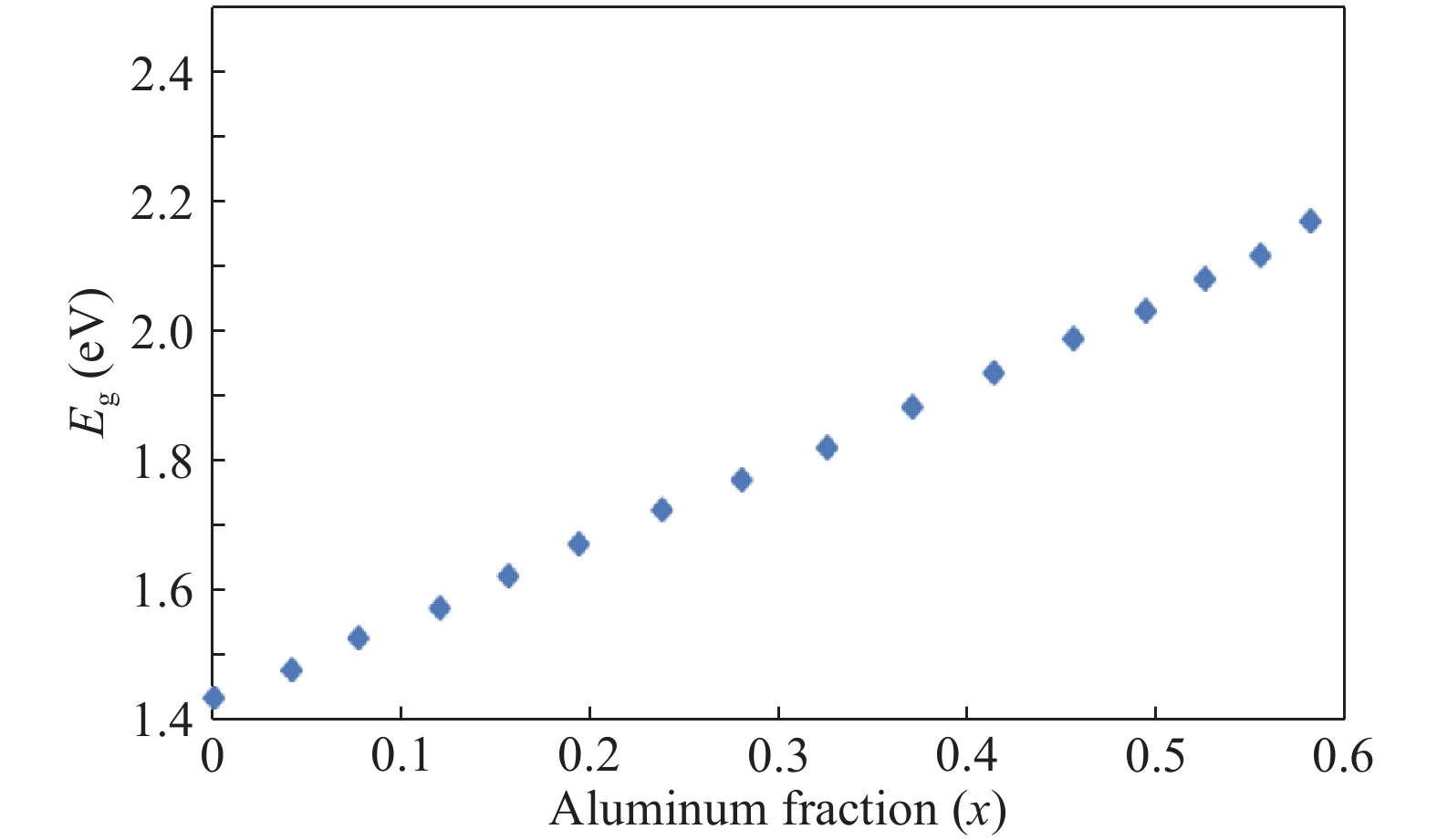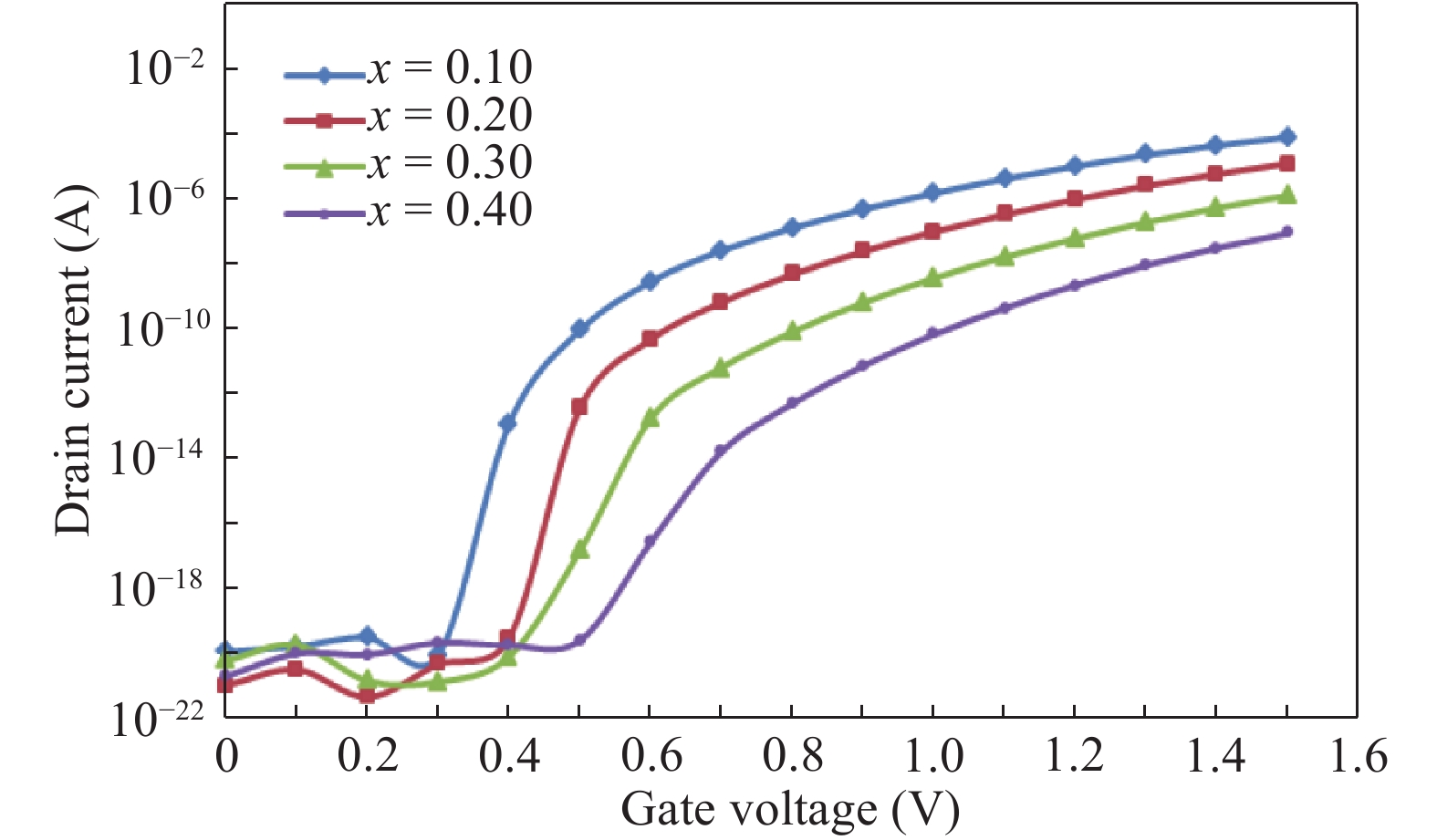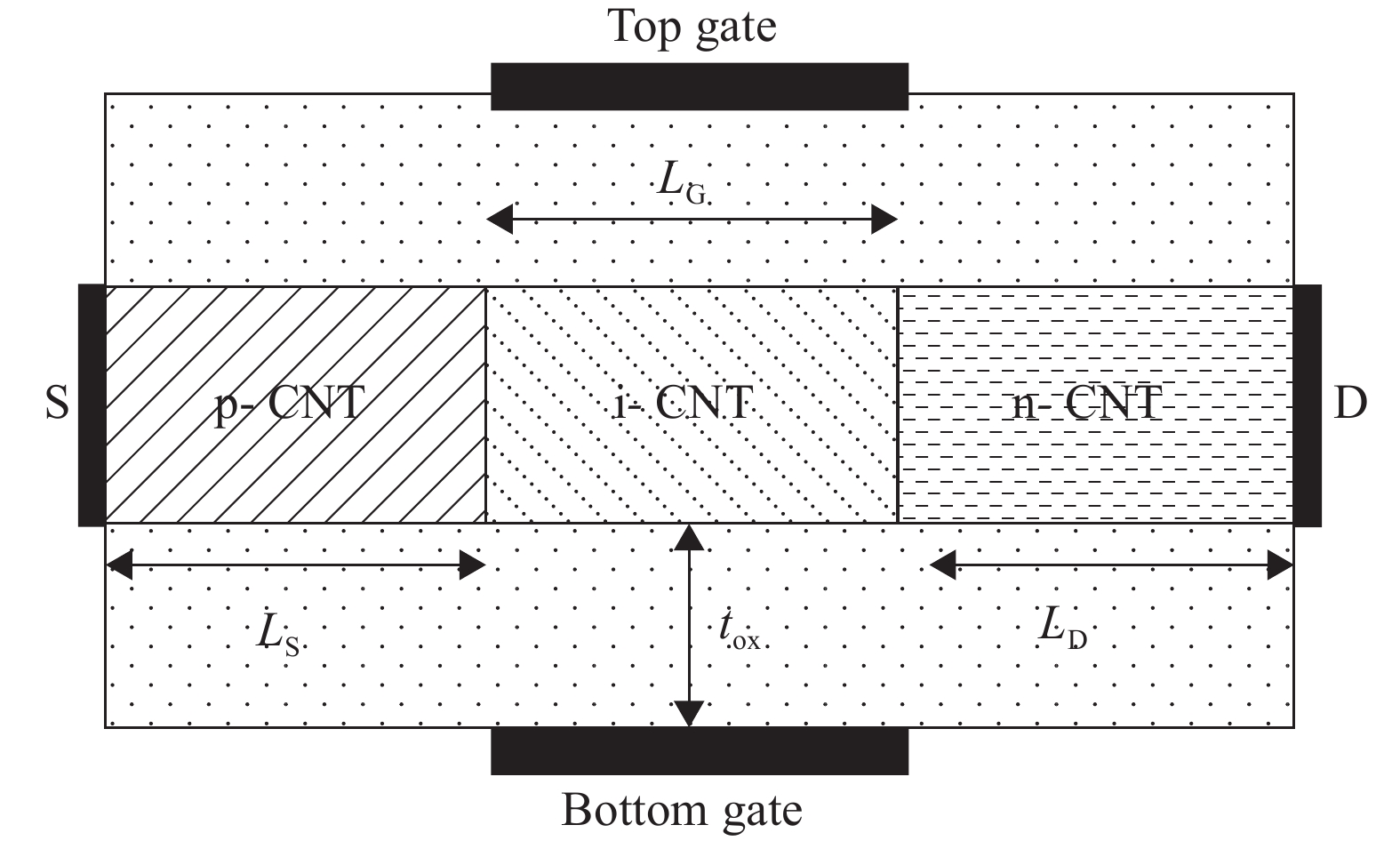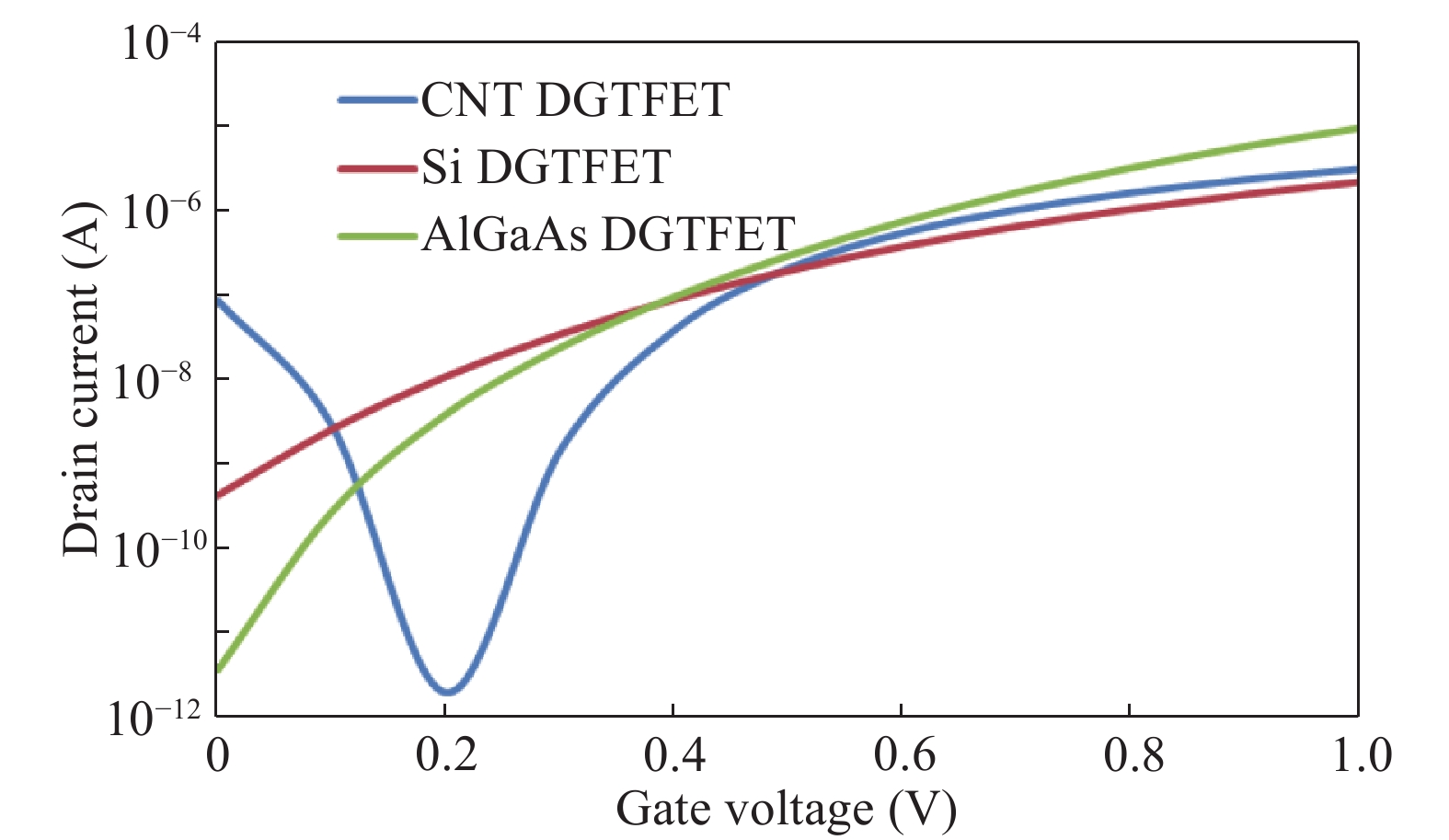| Citation: |
Shashi Bala, Mamta Khosla. Design and simulation of nanoscale double-gate TFET/tunnel CNTFET[J]. Journal of Semiconductors, 2018, 39(4): 044001. doi: 10.1088/1674-4926/39/4/044001
****
S S B la, M Khosla. Design and simulation of nanoscale double-gate TFET/tunnel CNTFET[J]. J. Semicond., 2018, 39(4): 044001. doi: 10.1088/1674-4926/39/4/044001.
|
Design and simulation of nanoscale double-gate TFET/tunnel CNTFET
DOI: 10.1088/1674-4926/39/4/044001
More Information
-
Abstract
A double-gate tunnel field-effect transistor (DG tunnel FET) has been designed and investigated for various channel materials such as silicon (Si), gallium arsenide (GaAs), alminium gallium arsenide (AlxGa1−xAs) and CNT using a nano ViDES Device and TCAD SILVACO ATLAS simulator. The proposed devices are compared on the basis of inverse subthreshold slope (SS), ION/IOFF current ratio and leakage current. Using Si as the channel material limits the property to reduce leakage current with scaling of channel, whereas the AlxGa1−xAs based DG tunnel FET provides a better ION/IOFF current ratio (2.51 × 106) as compared to other devices keeping the leakage current within permissible limits. The performed silmulation of the CNT based channel in the double-gate tunnel field-effect transistor using the nano ViDES shows better performace for a sub-threshold slope of 29.4 mV/dec as the channel is scaled down. The proposed work shows the potential of the CNT channel based DG tunnel FET as a futuristic device for better switching and high retention time, which makes it suitable for memory based circuits. -
References
[1] Sakurai T. Perspectives of low-power VLSI's. IEICE trans Electron, 2004, 87(4): 429[2] Bernstein K, Cavin R K, Porod W, et al. Device and architecture outlook for beyond CMOS switches. Proc IEEE, 2010, 98(12): 2169 doi: 10.1109/JPROC.2010.2066530[3] Seabaugh A C, Zhang Q. Low-voltage tunnel transistors for beyond CMOS logic. Proc IEEE, 2010, 98(12): 2095 doi: 10.1109/JPROC.2010.2070470[4] Zener C. A theory of the electrical breakdown of solid dielectrics. Proc Royal Soc London A, 1934, 145(855): 523 doi: 10.1098/rspa.1934.0116[5] Silvaco ATLAS device simulator and user manual, silvaco int; Santa Clara, CA, USA 5.19.2 2013[6] Appenzeller J, Lin Y M, Knoch J, et al. Comparing carbon nanotube transistors-the ideal choice: a novel tunneling device design. IEEE Trans Electron Devices, 2005, 52(12): 2568 doi: 10.1109/TED.2005.859654[7] Sharma S K, Raj B, Khosla M. Comparative analysis of MOSFET, CNTFET and NWFET for energy efficient VLSI circuit design. J VLSI Des Tools Technol, 2016, 6: 1[8] Boucart K, Ionescu A M. Length scaling of the double gate tunnel FET with a high-k gate dielectric. Solid-State Electron, 2007, 51(11): 1500[9] Sharma S K, Raj B, Khosla M. A Gaussian approach for analytical subthreshold current model of cylindrical nanowire FET with quantum mechanical effects. Microelectron J, 2016, 53: 65 doi: 10.1016/j.mejo.2016.04.002[10] Sharma S K, Raj B, Khosla M. Subthreshold performance of In1−xGaxAs based dual metal with gate stack cylindrical/surrounding gate nanowire MOSFET for low power analog applications. J Nanoelectron Optoelectron, 2017, 12(2): 171 doi: 10.1166/jno.2017.1961[11] Zhang L, Lin X, He J, et al. An analytical charge model for double-gate tunnel FETs. IEEE Trans Electron Devices, 2012, 59(12): 3217 doi: 10.1109/TED.2012.2217145[12] Kumar S, Raj B. Compact channel potential analytical modeling of DG-TFET based on Evanescent-mode approach. J Comput Electron, 2015, 14(3): 820 doi: 10.1007/s10825-015-0718-9[13] Singh A, Khosla M, Raj B. Analysis of electrostatic doped Schottky barrier carbon nanotube FET for low power applications. J Mater Sci: Mater Electron, 2017, 28(2): 1762 doi: 10.1007/s10854-016-5723-7[14] Singh K, Raj B. Temperature-dependent modeling and performance evaluation of multi-walled CNT and single-walled CNT as global interconnects. J Electron Mater, 2015, 44(12): 4825 doi: 10.1007/s11664-015-4040-x[15] Narang R, Saxena M, Gupta M, et al. Modeling and simulation of multi layer gate dielectric double gate tunnel field-effect transistor (DG-TFET). Students' Technology Symposium (TechSym), 2011: 281[16] Kumar S, Raj B. Analysis of ION and ambipolar current for dual-material gate–drain overlapped DG-TFET. J Nanoelectron Optoelectron, 2016, 11(3): 323 doi: 10.1166/jno.2016.1902[17] Singh K, Raj B. Performance and analysis of temperature dependent multi-walled carbon nanotubes as global interconnects at different technology nodes. J Comput Electron, 2015, 14(2): 469 doi: 10.1007/s10825-015-0667-3[18] Krishnamohan T, Kim D, Raghunathan S, et al. Double-gate strained-Ge heterostructure tunneling FET (TFET) with record high drive currents and$ \ll $ 60 mV/dec subthreshold slope. IEEE International Electron Devices Meeting, 2008: 1[19] Arun S, Balamurugan N B. An analytical modeling and simulation of dual material double gate tunnel field effect transistor for low power applications. J Electr Eng Technol, 2014, 9(1): 247 doi: 10.5370/JEET.2014.9.1.247[20] Singh A, Khosla M, Raj B. Compact model for ballistic single wall CNTFET under quantum capacitance limit. J Semicond, 2016, 37(10): 104001 doi: 10.1088/1674-4926/37/10/104001[21] Sahoo R, Mishra R R. Simulations of carbon nanotube field effect transistors. Int J Electron Eng Res, 2009, 1(2): 117[22] Singh A, Khosla M, Raj B. Compact model for ballistic single wall CNTFET under quantum capacitance limit. J Semicond, 2016, 37(10): 104001 doi: 10.1088/1674-4926/37/10/104001[23] Singh A, Khosla M, Raj B. Comparative analysis of carbon nanotube field effect transistor and nanowire transistor for low power circuit design. J Nanoelectron Optoelectron, 2016, 11(3): 388 doi: 10.1166/jno.2016.1913 -
Proportional views






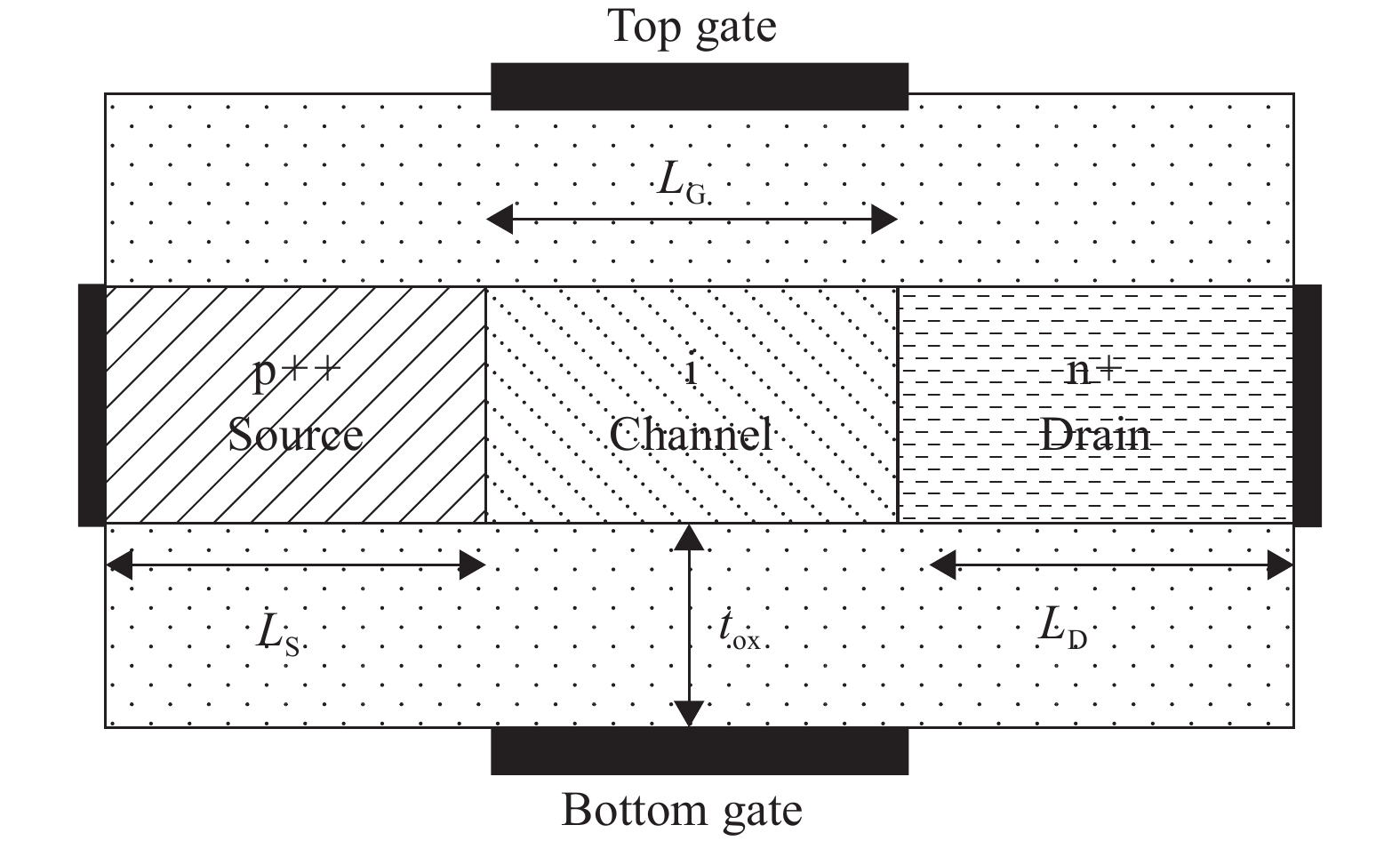
 DownLoad:
DownLoad:
